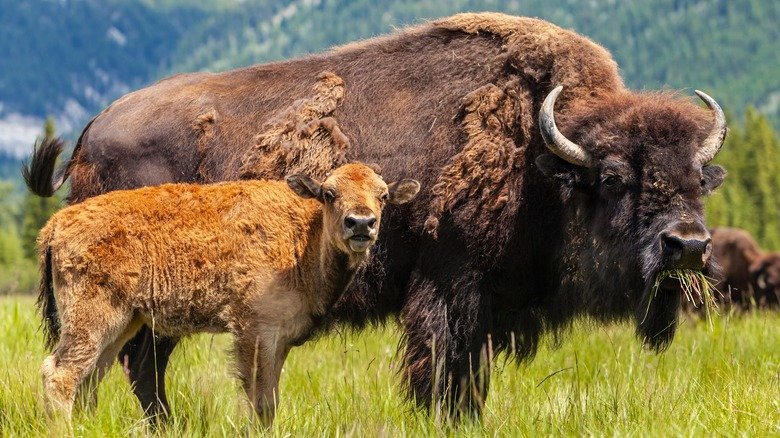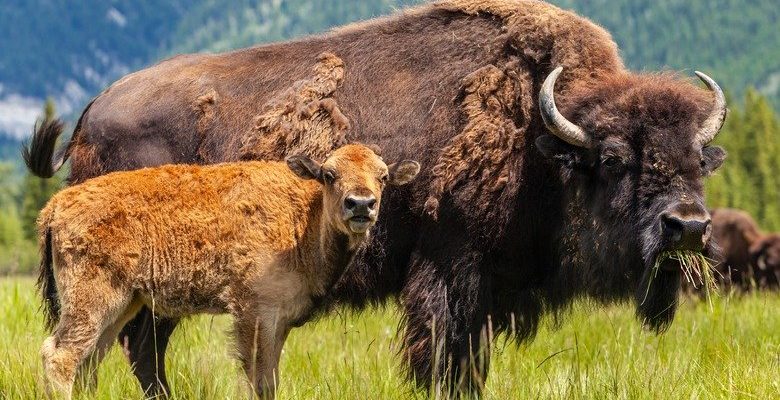
Just like how we might change with the seasons—adjusting our wardrobes and habits—species evolve over time to adapt to their environments. Imagine trying to navigate a tricky maze. If you’re smart, you learn from each turn and misstep, finding your way. The bison’s journey through time is much like that, marked by changes and adaptations that helped them survive and thrive in diverse ecosystems. So, grab your favorite beverage, and let’s explore this remarkable journey together.
The Ancestors of the American Bison
To understand the American bison, we need to take a step back in time—way back. The bison’s ancestors roamed the earth during the **Pleistocene Epoch**, which spanned from about 2.6 million to 11,700 years ago. During this period, the climate was cooler, and large mammals, often referred to as megafauna, were abundant. Our bison’s ancestors, known as **Bison antiquus**, were quite different from the bison we see today.
Bison antiquus was larger and had long, curved horns. These animals were more widespread, roaming not only North America but also parts of South America. They adapted to a variety of habitats, from grasslands to woodlands. You might say they were the pioneers of their time, navigating changing landscapes and climates just like a seasoned traveler.
As time passed, these bison evolved into what we now recognize as the American bison, or **Bison bison**. The change wasn’t sudden; rather, it was a gradual process influenced by factors like food availability and climate changes. When the Ice Age came, many bison populations adapted to survive in colder environments, while some faced extinction, highlighting the harsh realities of survival.
How Climate Changes Shaped the Bison
Climate shifts have played a significant role in the bison’s evolutionary journey. During the last Ice Age, roughly 20,000 years ago, massive glaciers covered parts of North America, creating a cooler and drier environment. These conditions drastically affected vegetation types, forcing bison to change their migration patterns and grazing habits.
As glaciers receded, the climate warmed, leading to the vast **prairies** and grasslands we associate with bison today. These changes provided bison with a rich source of food, and they flourished in this new environment. Isn’t it fascinating how the Earth’s climate can shape an entire species? Just like how our favorite coffee shops might change their menu with the seasons, bison adapted to the changing landscape, ensuring their survival.
In the subsequent centuries, the bison spread across North America, becoming a crucial part of the ecosystem. Their grazing helped maintain grassland health by preventing overgrowth and promoting biodiversity. You might say they were nature’s landscapers, shaping the environment around them in ways we’re still discovering today.
The Bison’s Relationship with Humans
The relationship between American bison and humans has been complex and often tragic. Indigenous peoples revered the bison, relying on them for food, clothing, and tools. They understood the bison’s role in their ecosystem and practiced sustainable hunting methods. To many Native American cultures, the bison represented life, and rituals surrounding these animals were deeply embedded in their traditions.
However, as European settlers arrived in the 1800s, the bison faced unprecedented challenges. The demand for bison hide and meat skyrocketed, leading to large-scale hunting. Within just a few decades, the bison population plummeted. From an estimated 30 million bison roaming the Great Plains, only about 1,000 remained by the end of the 19th century.
This dramatic decline serves as a stark reminder of how human activities can impact animal populations. It’s not just a story of loss; it’s also one of resilience. Conservation efforts began in the late 1800s, when people started to recognize the bison’s cultural and ecological importance, leading to a recovery effort that continues today.
Bison Conservation and Current Status
The conservation efforts for bison have been a remarkable success story. In the early 20th century, organizations like the American Bison Society were formed to help protect the dwindling bison populations. Today, thanks to these efforts, their numbers have rebounded to around 500,000—though let’s be clear, this is still a fraction of their historical population.
Thanks to national parks like Yellowstone, bison can roam protected lands that mimic their original habitats. They’ve become a symbol of conservation success, representing the importance of protecting wildlife. Yet, bison still face challenges, particularly with habitat loss and conflicts with livestock, highlighting the ongoing need for thoughtful management and protection.
Conversations about bison conservation often spark debates about land use and wildlife management. It’s a reminder that our natural world is interconnected. As we strive for a harmonious balance between human development and wildlife conservation, understanding the bison’s complex history helps to guide our future efforts.
The Cultural Significance of the Bison Today
Beyond the ecological and conservation aspects, the cultural significance of the bison endures today. They are not just animals; they are symbols of resilience, strength, and the spirit of America’s natural heritage. Many Native American tribes continue to honor the bison through ceremonies and traditions that celebrate their historical and cultural connections to these magnificent creatures.
In pop culture, bison have also made their mark. You might see them in logos, art, and even as mascots for sports teams. They embody the rugged spirit of the American West and remind us of our connection to nature. This cultural reverence is crucial, as it helps to educate future generations about the importance of wildlife and the environment.
Local bison farms and eco-tours are gaining popularity, allowing people to experience bison up close while also supporting conservation efforts. These interactions foster a greater appreciation for the bison and their role in our ecosystems. It’s a beautiful way to continue the narrative of the bison and ensure their legacy endures.
Reflecting on the Evolutionary Journey
When you think about the evolutionary history of the American bison, it’s clear that their journey is more than just academic; it’s a testament to nature’s resilience. From their ancient ancestors to their current status as icons of conservation, bison reflect a history that intertwines with our own.
Understanding their evolution reminds us of the fragile balance within ecosystems and our responsibility to protect it. It’s a call to action, urging us to engage in sustainable practices and support efforts to ensure that these magnificent animals continue to roam the plains for generations to come.
So, whether you encounter a bison in the wild or through a documentary, remember the incredible story behind them. They’re not just a part of our landscape; they’re a piece of our shared history. As we sip our coffees and chat about the world’s wonders, let’s keep the bison’s legacy alive in our hearts and actions.

